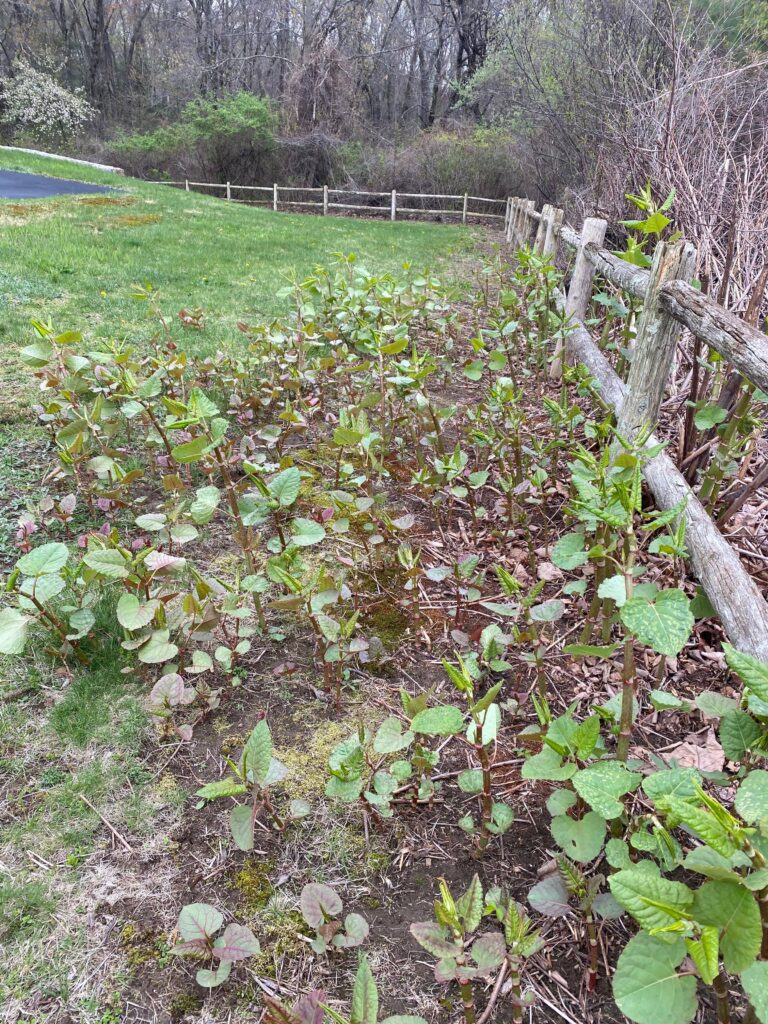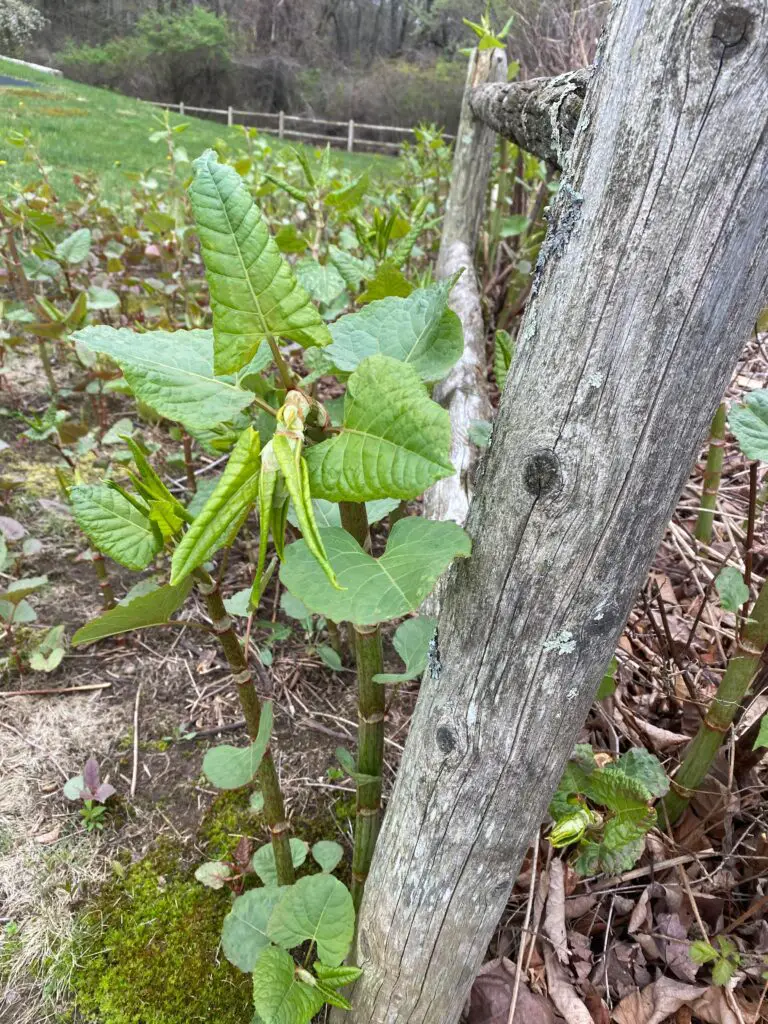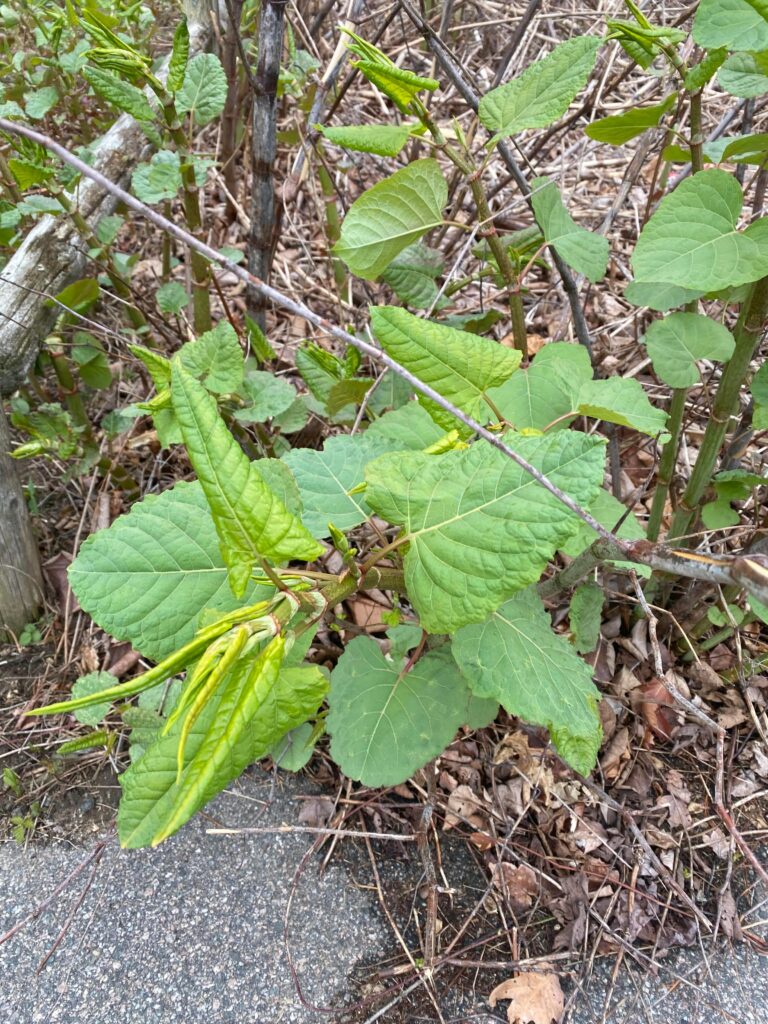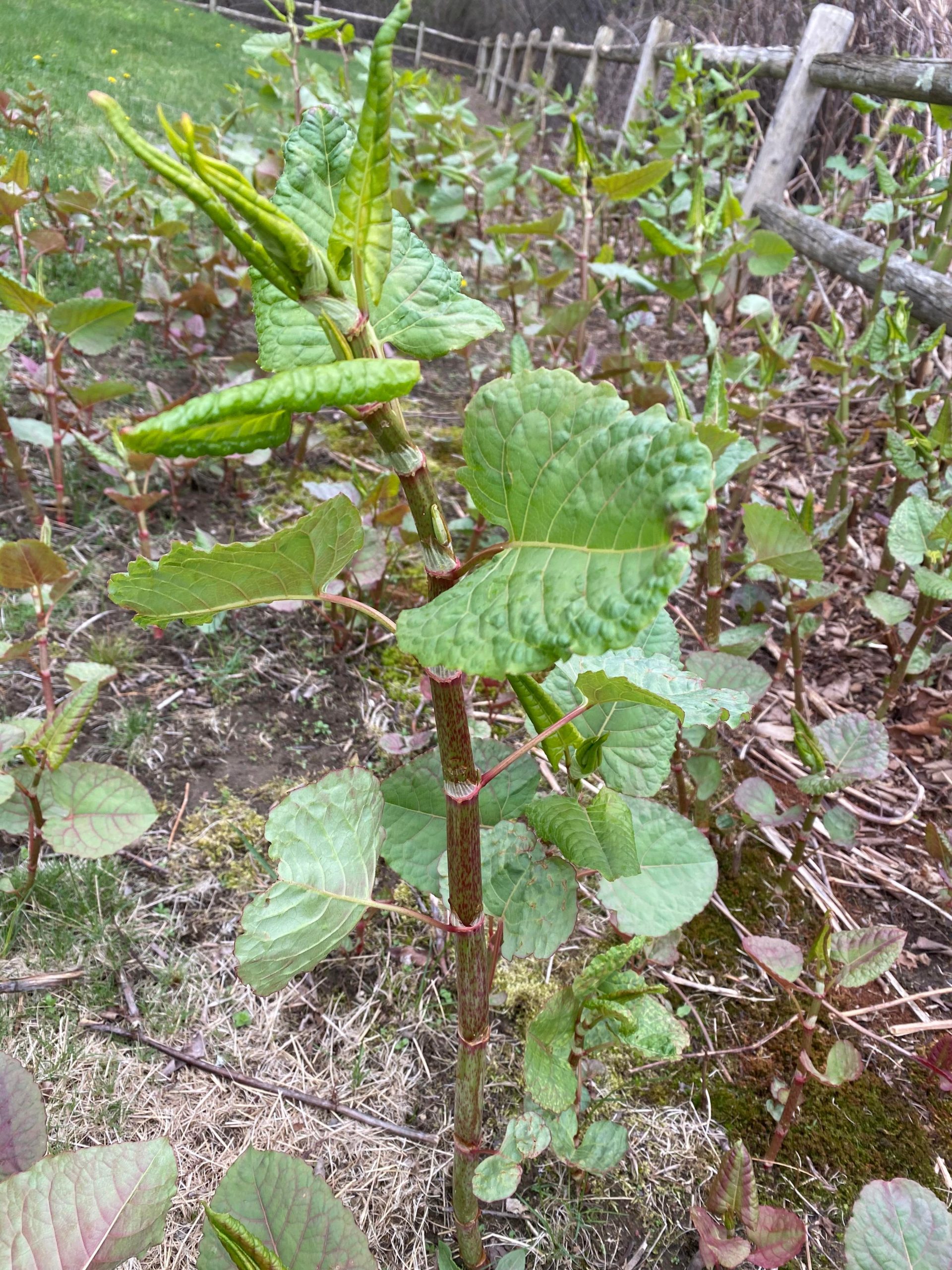Perched on bamboo-like stems, Japanese knotweed, aka Godzilla weed, is one of the most invasive plants the world over. If you’re unlucky enough to identify Japanese knotweed growing in your lawn or garden, you’ll want to aim for complete eradication to guard against its further growth. It will typically require multiple attacks over time to completely eradicate Japanese knotweed, but with diligence and the proper methods, it can be accomplished. Use the following tips to remove this invasive weed from your landscape.
Table of Contents
What Is Japanese Knotweed?
Japanese knotweed, which includes plant species known as Polygonum cuspidatum and Fallopia japonica, is a member of the buckwheat family. Notoriously difficult to get rid of, Japanese knotweed grows in lawns, garden beds, or virtually anywhere where the soil has been disturbed (even roadsides). This shrubby perennial is an invasive plant that prefers sunny and moist areas and once it finds them, expect rampant growth.
Identify Japanese Knotweed
Japanese knotweed develops bamboo-like canes and features green heart-shaped leaves and small creamy white flowers that grow in clusters. This invasive weed can grow as tall as nine feet high on tall stems that form dense thickets. Its white flowers usually appear by late summer. Telltale signs of a Japanese knotweed problem are its heart-shaped leaves, white flowers, and bamboo-like stems. If you identify Japanese knotweed growing in your landscape, you’ll want to address this invasive plant sooner rather than later.



The pictures above are from one of my customer’s neighbors’ lawns. They’ve been a client for three years, and I’ve seen this knotweed quickly spread from this woodline into their lawn. I was permitted to upload these photos and will upload more in 2024 to see how much more this takes over, as their organic approach will only encourage this proliferation.
Japanese Knotweed Removal
In order to kill Japanese knotweed, you should plan to use multiple methods of knotweed plant control throughout the growing season. Even if you hire a professional company to get rid of Japanese knotweed, they’ll likely have to employ multiple herbicide treatments and use other methods too.
Natural Methods to Get Rid of Japanese Knotweed
Many gardeners choose to smother Japanese knotweed using tarps. The invasive plant needs sunlight to photosynthesize efficiently. You can fasten your tarp over the plants with stakes or heavy materials and then cut back any Japanese knotweed new growth that appears outside of the tarp. Smothering is an ideal option for removing Japanese knotweed in the spring.
Removing Japanese knotweed organically usually involves digging. However, its root system can extend six feet underground. Consequently, it’s difficult to remove Japanese knotweed simply by digging. Most people attempt to control a Japanese knotweed infestation by cutting the canes to control the plant’s growth. Cutting Japanese knotweed is a task best performed throughout the summer.
Also, remember that proper disposal of Japanese knotweed, even dead knotweed, is crucial for removing invasive plants like this from your garden and lawn. Without controlled waste, the plant can still spread. After you remove Japanese knotweed, bag all of its parts as part of your controlled waste plan. Although some people choose to burn Japanese knotweed, it is not as effective as other methods of control.
How to Kill Japanese Knotweed with Herbicide Treatment
Most people choose to kill Japanese knotweed using a spray herbicide like glyphosate herbicide. A weed killer like Round Up is the best and most effective herbicide for treating knotweed. In order to remove Japanese knotweed completely and prevent it from infesting surrounding vegetation or invading neighboring properties, the use of a non-selective weed killer is ideal. The best time to apply a weed killer to remove Japanese knotweed from your garden and lawn is in early spring and early fall.
How to Prevent Japanese Knotweed
The best way to remove Japanese knotweed is to prevent it from infesting your lawn and garden in the first place. Because it’s such a time-consuming process to get rid of Japanese knotweed, it’s ideal to take steps to prevent its growth. To prevent an invasion of this invasive plant, install native plants in any disturbed habitats of your landscape or garden. Preventing this plant from getting a ‘foothold’ in your soil is the best way to stop it from moving into your landscape.
Japanese Knotweed FAQs
How do I permanently get rid of Japanese knotweed?
Using a weed killer is the best way of removing Japanese knotweed for good.
Can you remove Japanese knotweed yourself?
You can remove Japanese knotweed yourself if you choose. Ideally, you should control Japanese knotweed using multiple methods, including spray weed killer, smothering the plant, cutting the plant, digging out its underground stems, and repeating these methods as necessary until you remove Japanese knotweed from your garden completely.
Does vinegar kill Japanese knotweed?
If Japanese knotweed could laugh, it would surely do so if you attempt to eradicate it using vinegar. Getting rid of Japanese knotweed requires more robust eradication methods like mechanical removal and heavy-duty herbicide sprays.
What is the best chemical to kill Japanese knotweed?
Most gardeners opt to kill Japanese knotweed using glyphosate herbicide. A product like TZone is extremely effective for eradicating Japanese knotweed. Once you get rid of Japanese knotweed, be sure to keep watch to ensure it doesn’t come back. You may need to repeat spraying the following growing season.

